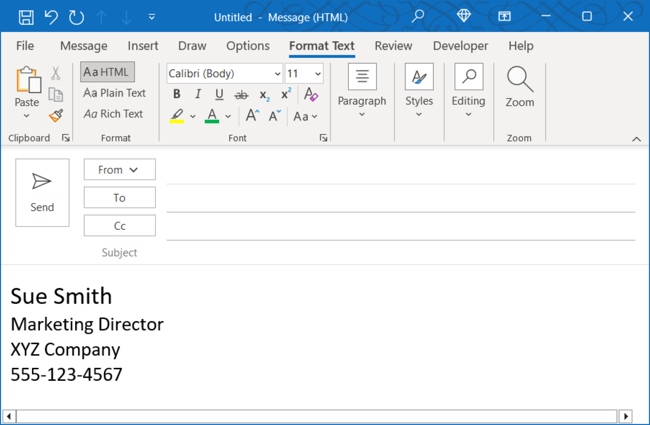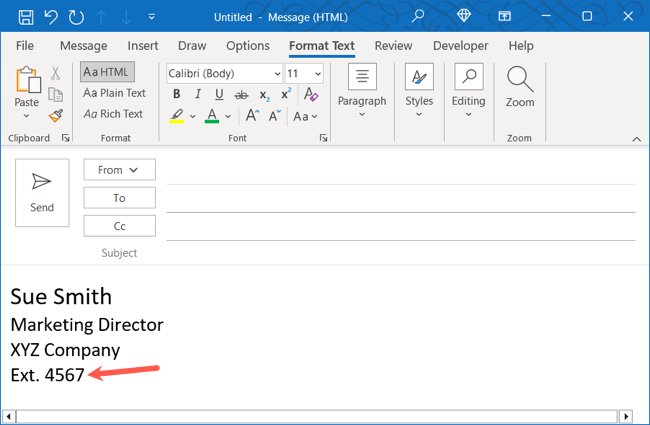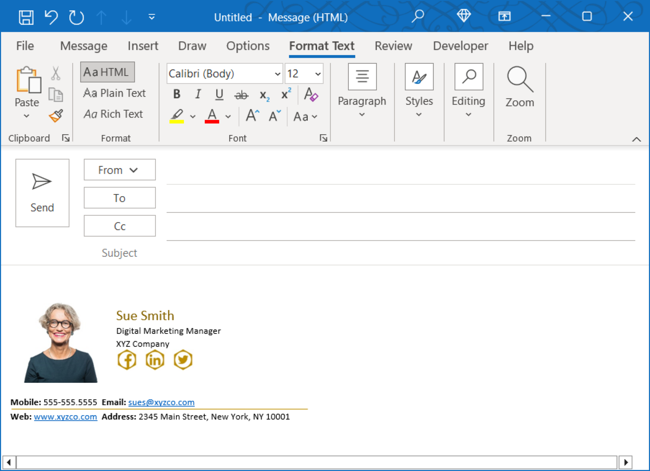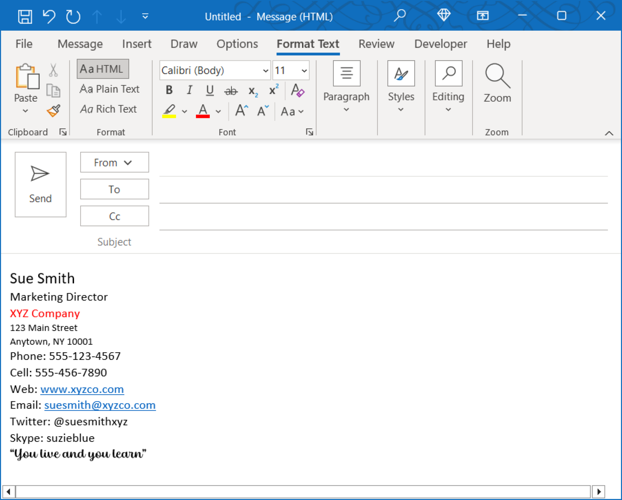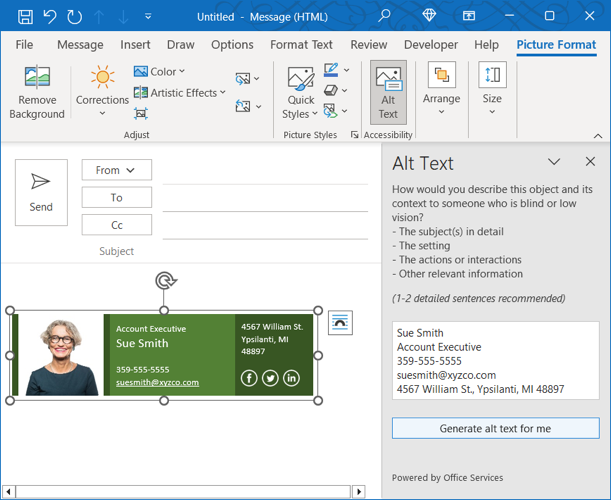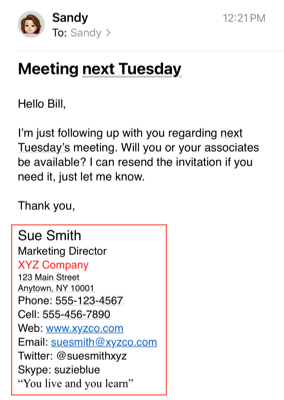Quick Links
Key Takeaways
Always include the basics like full name, title, company, and phone number in any professional email. But depending on your industry and the recipient, you may want to add more details, a photo, logo, or social media links.
You've probably seen an email signature that was simply a name and another that includes lines of details, links, and images. Which is better? Which is more effective? We'll help you decide what information you should put in an email signature.
It Depends on What You'll Use the Signature For
To get started, ask yourself what you'll be using the signature for. Is it a professional signature for your company or a personal signature? Will you use the signature by default for every email or only certain ones? Do you plan to include the signature in both internal and external emails?
Most people who create and use an email signature do so for professional reasons. You may also use a signature if you're a student or job seeker. With this in mind, the details you include can depend on your industry, occupation, or intent.
Additionally, if you plan to use a signature for all emails you send, the details you include may differ for external versus internal messages (within your organization). In this case, you might consider setting up multiple signatures and use the one you need at the time.
Let's take a look at the basics every signature should include, optional items you might add, and details you should leave out of your email signature.
What You Should Include in a Signature
These are the essential details you should include in your signature.
Full name: At the very least, you should include your full name (first and last) in your email signature. While you probably only use your first name for personal emails, you should use your full name for professional ones.
Title or position: When you send an email to someone new, assume they know nothing about you. They have your name and your company (below) but likely want to know your position in the company.
Company name: Again, since most signatures are used for business purposes, you should include the name of your company below or on the same line as your title or position.
If you're a student, you can include your major, such as "Computer Science Student" and the name of your school.
Phone number: While email is a solid form of communication, often times a phone call is necessary. If your email recipient wants to discuss the topic verbally, you should provide them your phone number and, if applicable, your country code and extension.
If you create a separate email signature for internal and external communications, you may simply include your extension rather than a complete phone number. This is especially acceptable if all calls are routed through the same main line.
What You Can Include in a Signature
Depending on your profession, organization, or the intent of your signature, here are several details that you may want to include.
Company website: Many may consider this a basic that all signatures should include. However, it's simply an option that you may want to add. If so, link the URL so your recipient can visit with a click.
Company mailing or physical address: If you work for an organization that has different locations, like in multiple states, regions, or countries, you might want to include the company's address for the recipient's reference.
Email address: Many suggest that your email address isn't necessary in the signature because it's in the header of the email. However, there are email applications that display the name only, especially when replying.
Photo: If you want to add a personal touch, you can include a photo of yourself. Should you decide to include a photo, be sure that it's a professional headshot and not a simple selfie or caricature.
Company logo: To represent your company brand, consider adding your logo to the signature. It can be beneficial for your recipient to see the design making it easy to remember at a glance. Think about some of the most well-known logos that make those brands quickly identifiable.
Color: If you decide not to include your company logo, consider a tiny splash of color with your company's colors instead. You can use color simply for accents, links, or lines, but keep it to a minimum of one or two colors.
Social media links: For a quick way for your recipient to connect, you can include links or linked icons to social media sites like Facebook, Twitter, or Instagram. This is especially helpful if you're using the signature for yourself as a freelancer, contractor, or job seeker rather for a company.
Disclaimer: Many companies require a disclaimer regarding confidentiality and sharing at the bottom of an email signature for external messages. Check with your supervisor or manager for the verbiage if you believe this may be the case.
What You Should Not Include in a Signature
If you're unsure whether or not you should include something in your email signature that isn't listed above, here are a few items to avoid.
Personal information: Don't include personal details in a business signature. For example, avoid adding your personal cell phone number or home address unless you want your recipient to have it and possibly use it.
Inspirational quotes: While quotes may be suitable for personal email signatures, they're unnecessary distractions in professional ones that simply take up space.
Image signature: You may find attractive email signatures that are actually images rather than text. These usually look lovely but are impractical for those with screen readers or using a Read Aloud feature. If you do decide to use an image for your signature, be sure to include alt text.
Other Email Signature Tips
When it comes to email signature design, you can find plenty of examples, signature generators, and templates to help. Also, check out our how-to for Outlook's email signature templates.
Keep it brief. It's recommended that your email signature be no longer than four or five lines. With too much detail, it takes time for your recipient to find the information they need. Plus it can be a space hog on mobile as shown below.
Additionally, use easy-to-read fonts and don't overdo it with too many different font styles or sizes, colors, images, or social media links. See the first screenshot in the what not to include section above.
Whether you create a single email signature or multiple ones for different types of messages, be sure to include the most important information first and then go from there with beneficial details.


